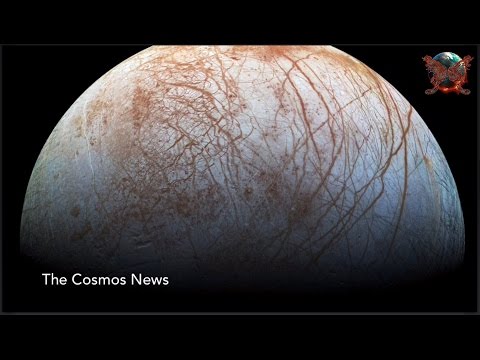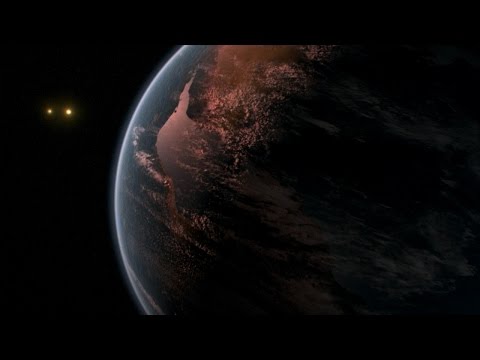James Webb Space Telescope prompts scientists to rethink understanding of the universe
>> Today marks one year since the world first started seeing spectaculr images of the cosmos that were captured by the powerful James Webb telescope. But as science correspondent miles o’brien tells us, getting those images, including the newest one released today of dozens of stars being formed, is only part of the important work being done by the ten billion dollar telescope. >> For the James Webb space telescope, the hits just keep coming – one riveting image after another from the far reaches of the universe, to planets right here in our own solar system. We got our first taste a year ago – and the images did not disappoint. The carina nebula. Stephan’s quintet. And – spectacularly – this so-called deep field image, showing thousands of galaxies stretching into the distant universe. >> How much stunning science was in there as well? John Mather: Well, we’re still working out the details of what all those mean. >> That’s nasa astrophysicist John Mather. He’s been a senior scientist on Webb since its inception back in the mid-1990’s. John Mather: I think the people are really interested in what are the surprises that we’re getting out of the Webb. First, they want to see the beautiful pictures and be told what those pictures are about. And then they said, well, what’s new? What did you find out that we didn’t know before? And of course, the big answers are the first galaxies grew differently than we expected and we don’t know why their predictions were wrong. >> Webb is shedding light on the big answers because it is uniquely capable of seeing them. It operates in the infrared wavelength. Invisible to human eyes, this part of the spectrum is the only way to see the most distant objects in space that are moving away from us as the universe expands. Before Webb launched, astronomers used near infrared instruments aboard the Hubble space telescope to see galaxies that date to about half billion years after the big bang. But Webb can see a few hundred million years further back in time. Astronomers hoped they might catch glimpses of the universe before stars and galaxies formed. Marc postman: And yet we see galaxies already exist at that time. >> Marc postman is interim deputy director at the space telescope science institute in Baltimore. Marc postman: It doesn’t refute big bang cosmology or say we have to start from scratch. But what it does say is we do have to learn new ways of getting stars and galaxies to assemble very quickly after the big bang within within a couple of hundred million years. >> But the most interesting findings for astronomers don’t come from the eye-candy the rest of us gobble up. Case in point – Uranus. Heidi Hammel: I have to say the word “Spectroscopy,” because that’s what these science observations were all about. We have some images and they’re fine, but the spectroscopy blew us away. >> Heidi Hammel is a scientist on the Webb team who focuses on solar system observations. Webb’s science instruments generate “Spectroscopy” data that astronomers use to study the chemical composition of objects in space. If we were to train one on Earth, we would detect the different compounds found here on this planet. For astronomers, a spectrograph is worth a thousand pictures. Heidi Hammel: We are seeingevidence of chemistry that we had hypothesized. They’re like laboratory textbook examples of chemistry of ethane and methane and acetylene and all this interesting dynamical stuff in the atmosphere of Uranus. And that is very interesting because that’s new chemistry that we hadn’t thought about. >> Still, Heidi Hammel will confess to being wowed by a great image. Miles o’brien: This is not processed at all. Judy Schmidt: And then you I believe this has how many? Miles o’brien: How many filters? Three. And is it always three? Judy Schmidt: This is only this picture. I only had two >> In Modesto, California I sat down with someone who helps make the visual magic happen. Judy Schmidt describes herself as a celestial artist. Miles o’brien: How many, how many images would you say you have processed over the years? Judy Schmidt: Oh, god. Give or take hundreds. Hundreds. >> She’s a stay-at-home mom with a background in graphic design. 15 over the years, she’s made a color-correcting astronomy images in her home office – posting her work on flickr and Twitter. Miles o’brien: Well, you’re trying to let us see something we can’t see, right? That’s hard. Judy Schmidt: Yes, but there’s a natural order of wavelengths. So even though. It’s infrared. I’m still using the same, I guess, formula to put together an image where the shortest wavelengths will be represented by blue, and then the medium wavelengths get represented by green, and then the longest been in the red. >> Among her most celebrated work:hubble images of the comet shoemaker-levy 9 impacting Jupiter in 1994. So when Webb scientists pulled down fresh images of Jupiter, Heidi Hammel gave schimdt a crack at those too. Judy Schmidt: I just thought it was very fun and something to do with my life. And if I can make some astronomers day by showing interest in their work and making a pretty image out of it, then I thought that was awesome too. Miles o’brien: So you’re like you’re like the Dean of the citizen science image processors at this point. And do you do you imagine quitting? Are you going to keep going? Judy Schmidt: I don’t feel like it will ever end as long as there’s space telescopes in the sky. >> But there’s little concern space telescopes will fade away. And this is a special place if you care about astronomy and space telescopes. Right? Julie Mcenery: This is where some of the most important observatories of our time have been put together, assembled, M go into space. >> I caught a glimpse of nasa’s next flagship observatory under assembly at the Goddard space flight center in greenbelt, Maryland. Julie Mcenery is the senior project scientist on the Nancy grace Roman space telescope. Julie Mcenery: So if you were to compare us to Webb. Webb will look at a small region of the sky with exquisite sensitivity and sharpness, and it can tell you what’s happening, you know, right at the beginning, right at the earliest times in our universe. What Roman will do will tell you what happened between then and now. >> The team hopes to launch by 2026. There is no doubt they have a tough act to follow.













